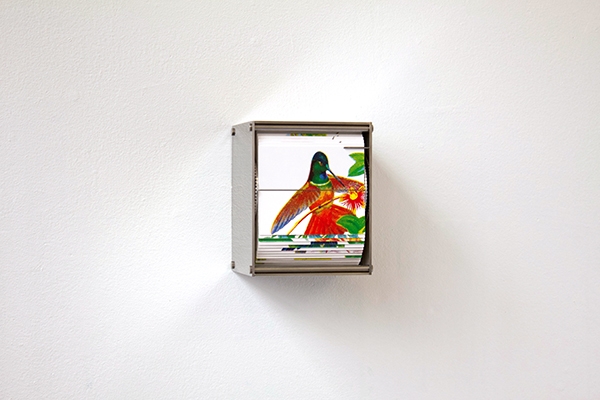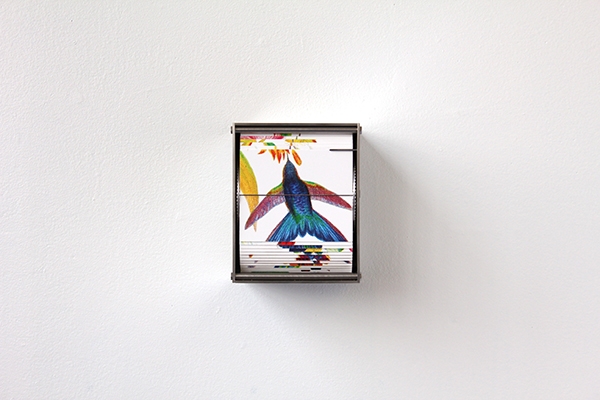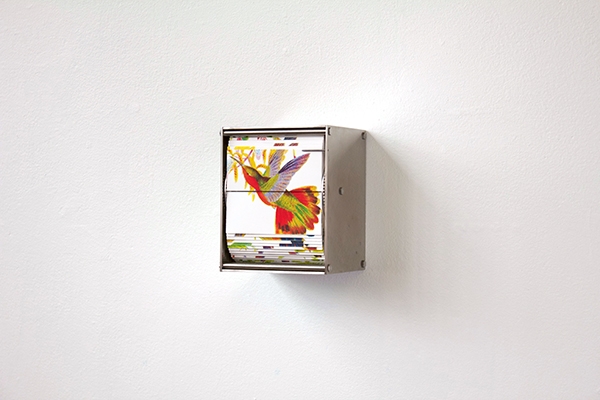ORNITHOLOGY M
4-COLOR SCREEN PRINT ON BRISTOL PAPER, STAINLESS STEEL, MOTOR AND ELECTRONICS. 4.25 X 5 X 3.75 in. 2018
Ornithology is a series of work that explores moving images within physical machines - working with the form and structure of how animation is made. The film itself is constructed from collaged 18th and 19th Century natural history illustrations - multiple frames of still birds combined to form a single bird in flight. Uncovering a type of hidden movement between each still frame, patterns of the birds' behavior emerge when played through time.
The series began while Fontanive was studying at the Royal College of Art in London in 2004. At that time he collected Victorian clocks from the street markets in East London. He used the clock parts and other found objects to invent the machine that drives the animation. Designing the mechanism over time, the bird animation and machine have informed each other in their development - the wings hinging like paper, and the paper cards flapping at the rate of bird's wings.
"The artist’s flapping hummingbirds and rushing fish are sculptural animations, or perhaps automata: machine-powered facsimiles of life. Automata were, famously, among the principal triggers of uncanny experience for Freud. The uncanny erupts in our encounter with an undecided being who occupies a state between life and death, whether a life-like machine or a ghost. Ghosts and picture-making machines share a long history; the first magic lanterns – the first crude cinematographic technology emerging in the 1790s – featured projections of spectres and demons, phantasmagoric light shows popular at the very same time Gothic fiction was booming. In those tales, ghosts almost always haunted enclosed spaces – from ancient castles to haunted houses, then subsequently smaller and smaller enclosures: forbidden rooms, confession-boxes, and finally machines, which always seemed supernaturally alive anyway, with their mysteriously moving parts and superhuman abilities. Like Fontanive’s spectral contraptions, ordinary ghosts demand the attention of all of the senses. Ghosts are heard and felt as much as they are seen: they may appear before us, or equally they enjoy setting fires, dragging chains,rapping on tables. In many ways, Fontanive’s artworks seem strangely possessed, producing curiously moving animals that are neither living nor dead, or creating ghostly systems which seem to float mid-air and follow a pace and logic of their own." Excerpt from "Juan Fontanive: Ghosts in the Machine," by Gilda Williams
 Ornithology J
Ornithology J
 Ornithology L
Ornithology L
 Ornithology M
Ornithology M